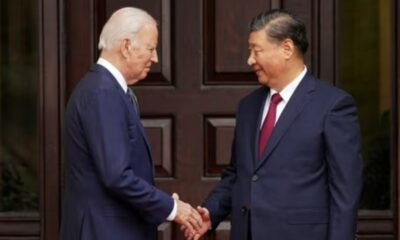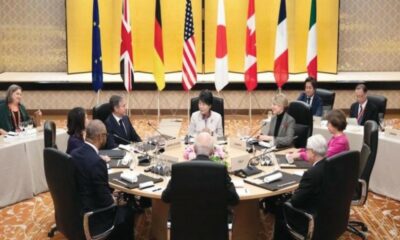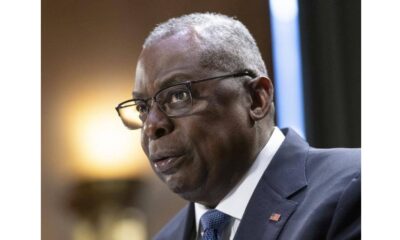A metal transition lies at the core of the energy transition. Compared to their gas-powered counterparts, wind farms, solar panels, and electric cars require a lot more copper, zinc, and nickel. Additionally, they need additional rare earth elements—exotic metals with special qualities—which are necessary for the magnets used in devices like EV motors and wind turbines.
China now controls the majority of rare earth element processing, purifying around 60% of the world’s supply. The Biden administration has stated that the scenario presents challenges to national and economic security, as demand for these minerals is expected to soar.
In the United States and many other countries, large amounts of rare earth metals are currently sitting untapped. The problem is that they are combined with a ton of hazardous mining waste.
Phoenix Tailings is expanding a method for extracting elements from mining waste, such as nickel and rare earth metals. After collecting oxidized metal with water and recyclable solvents, the company heats a mixture of molten salt and applies electricity to the metal.
Co-founded by MIT alums, the business claims that its pilot production plant in Woburn, Massachusetts, is the only location in the world that produces rare earth metals without emitting carbon dioxide or hazardous byproducts. Phoenix Tailings now uses renewable energy contracts to offset the electricity used in the process.
By 2026, the company anticipates producing over 3,000 tons of the metals, which would have accounted for almost 7% of all U.S. output in the previous year.
Phoenix Tailings is now increasing the range of metals it can manufacture and moving forward with plans to construct a second manufacturing plant with help from the Department of Energy.
According to the founding team, which consists of Nick Myers, Anthony Balladon, and MIT graduates Tomás Villalón ’14 and Michelle Chao ’14, the work has global and geopolitical ramifications.
“Being able to make your own materials domestically means that you’re not at the behest of a foreign monopoly,” Villalón explains. “We’re focused on creating critical materials for the next generation of technologies. More broadly, we want to get these materials in ways that are sustainable in the long term.”
Addressing a worldwide issue
After enrolling in Course 3.091 (Introduction to Solid-State Chemistry) during his first year at MIT, Villalón developed an interest in chemistry and materials science. He had the opportunity to work at Boston Metal, another MIT startup that decarbonizes steel production on a large scale using an electrochemical technique, during his senior year. Villalón, a materials science and engineering major, began considering developing more environmentally friendly metallurgical techniques as a result of the event.
But Villalón didn’t take action until he happened to meet Myers at a Bible study in 2018.
When the subject of electricity came up, “We were discussing some of the major problems in the world when we came to the topic of electrification,” Villalón remembers. It turned into a debate about how the United States obtains its materials and how we ought to consider electrifying their manufacturing. After ten years of working there, I eventually thought, “Let’s go do something about it.” Nick concurred, but I assumed he was merely trying to boost his self-esteem. Then, in July, he called me at random and said, ‘I’ve got [$7,000]. When do we start?’”
The founders began testing novel methods for making rare earth metals after Villalón brought in Chao, a former MIT classmate and fellow materials science and engineering major, and Myers brought in Balladon, a former coworker.
According to Villalón, “We went back to the base principles, the thermodynamics I learned with MIT professors Antoine Allanore and Donald Sadoway, and understanding the kinetics of reactions,” “Classes like Course 3.022 (Microstructural Evolution in Materials) and 3.07 (Introduction to Ceramics) were also really useful. I touched on every aspect I studied at MIT.”
The founders also participated in the U.S. National Science Foundation’s I-Corps program and were mentored by MIT’s Venture Mentoring Service (VMS). Sadoway advised the business.
The inventors constructed a prototype reactor in Villalón’s backyard after creating a preliminary version of their system design and purchasing an experimental amount of red sludge, a mining waste. In the end, the founders had a modest amount of product, but they had to quickly borrow the scientific tools necessary to identify it. It turned out to be pure iron and a trace amount of rare earth concentrate.
Today, Phoenix Tailings warms its combination to about 1,300 degrees Fahrenheit at its refinery in Woburn, where it incorporates mining waste that is rich in rare earth metals. Pure metal gathers on an electrode when an electric current is applied to the mixture. There is not much garbage left over after the operation.
Because rare earths require extremely high purities in comparison to metals manufactured traditionally, Villalón says, “the key for all of this isn’t just the chemistry, but how everything is linked together.” “As a result, you have to be thinking about the purity of your material the entire way through.”
Rare earths, nickel, magnesium, and other elements
When using renewable energy sources to generate power, Villalón claims the process is 100% carbon free, creates no harmful byproducts, and is cost-effective when compared to traditional manufacturing methods.
Neodymium and dysprosium, two rare earth elements crucial to magnets, are now produced for clients at the Woburn site. Consumers are utilizing the materials for defense applications, electric vehicles, and wind turbines.
Additionally, the business has been awarded two grants totaling over $2 million under the U.S. Department of Energy’s ARPA-E program. Its 2023 award funds the creation of a technology that employs carbonization and recycled carbon dioxide to extract nickel and magnesium from mining waste. Magnesium and nickel are both essential components for clean energy devices like batteries.
The company will use the most recent funding to modify its method so that it can generate iron from mining waste without emitting any harmful byproducts or emissions. Phoenix Tailings claims that it has an abundance of material to work with and that their technique is suitable with a broad range of ore types and waste materials: About 1.8 billion tons of garbage are produced annually in the United States as a result of the mining and processing of mineral ores.
Villalón says, “We want to take our knowledge from processing the rare earth metals and slowly move it into other segments,” Here, “We simply have to refine some of these materials here. There’s no way we can’t. So, what does that look like from a regulatory perspective? How do we create approaches that are economical and environmentally compliant not just now, but 30 years from now?”

 Entertainment2 weeks ago
Entertainment2 weeks ago
 Entertainment2 weeks ago
Entertainment2 weeks ago
 Entertainment3 weeks ago
Entertainment3 weeks ago
 Entertainment2 weeks ago
Entertainment2 weeks ago
 Entertainment2 weeks ago
Entertainment2 weeks ago
 Entertainment2 weeks ago
Entertainment2 weeks ago
 Entertainment3 weeks ago
Entertainment3 weeks ago
 Entertainment2 weeks ago
Entertainment2 weeks ago















 80%+ job placement rate for DigiRoads Classes students.
80%+ job placement rate for DigiRoads Classes students. Live Digital Marketing Projects – Gain direct experience running SEO, PPC, and social media campaigns.
Live Digital Marketing Projects – Gain direct experience running SEO, PPC, and social media campaigns.